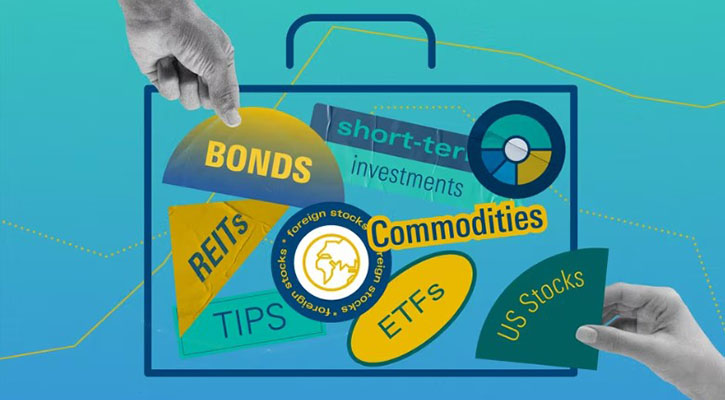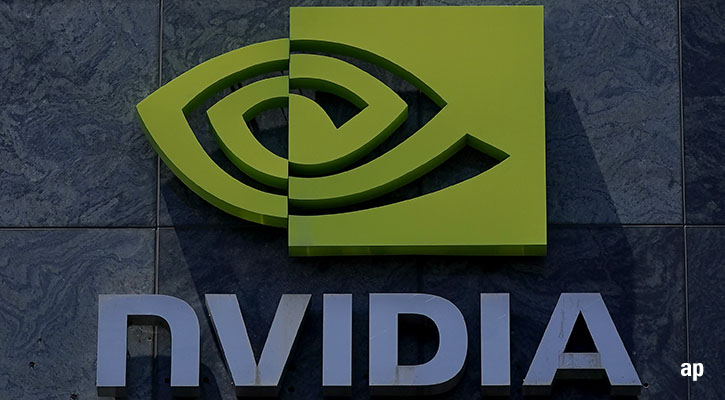Individual answers to that question may differ depending on each individual's familiarity with what is—and what is not—involved with the star ratings.
To clear up any potential misconceptions, here are a few things the star rating is not:- It is not qualitative nor subjective
- It is not a model for predicting short-term fund performance
- It is quantitative
- It is relative
- It is risk-adjusted
- It is historical
| March 1998 ratings | |||
| March 2003 Ratings |
Above- average |
Average | Below- average |
| Above-average | 140 | 65 | 35 |
| Average | 70 | 131 | 66 |
| Below-average | 37 | 82 | 100 |
 Looking at star ratings from funds' positions five years ago might be even more compelling as, instead of looking backwards from the current situation, it provides a summary of what happened to funds following an initial position. It might therefore be more analogous to the way one could view the situation today in an attempt to establish expectations for the future. However, this analysis produced similar results.
The following chart is based on over 58,000 observations on the just over 1,000 funds that were assigned a rating as of March 31, 1998. Funds that had a four-star rating five years ago, for example, deviated from that rating by more than one star only 8% of the time, stayed at four stars 55% of the time and plus or minus one star the other 37% of the time.
Looking at star ratings from funds' positions five years ago might be even more compelling as, instead of looking backwards from the current situation, it provides a summary of what happened to funds following an initial position. It might therefore be more analogous to the way one could view the situation today in an attempt to establish expectations for the future. However, this analysis produced similar results.
The following chart is based on over 58,000 observations on the just over 1,000 funds that were assigned a rating as of March 31, 1998. Funds that had a four-star rating five years ago, for example, deviated from that rating by more than one star only 8% of the time, stayed at four stars 55% of the time and plus or minus one star the other 37% of the time.
 A third, more comprehensive approach to studying star ratings stability was taken. For each and every fund that has ever received a star rating during the five-year period, we counted the number of months for which it received each rating. A hypothetical but somewhat typical example might be XYZ Fund's count of 15 months with a four-star rating, 30 months with a three-star rating, 10 months with a two-star rating, and no periods for which it was rated with either one or five stars.
By counting the 98,000 observations for the nearly 3,000 funds that have ever received a star rating from 1998 to 2003, we determined how many funds have consistently received one and only one rating over their lifetimes versus how many funds have experienced each and every rating at some point during their lives. The range of possibilities is therefore from only one to all five. As the following chart demonstrates, the latter has been much less common than the former. Over 60% of funds have received no more than two different ratings, while fewer than 13% of funds have received four or five different ratings at various times.
A third, more comprehensive approach to studying star ratings stability was taken. For each and every fund that has ever received a star rating during the five-year period, we counted the number of months for which it received each rating. A hypothetical but somewhat typical example might be XYZ Fund's count of 15 months with a four-star rating, 30 months with a three-star rating, 10 months with a two-star rating, and no periods for which it was rated with either one or five stars.
By counting the 98,000 observations for the nearly 3,000 funds that have ever received a star rating from 1998 to 2003, we determined how many funds have consistently received one and only one rating over their lifetimes versus how many funds have experienced each and every rating at some point during their lives. The range of possibilities is therefore from only one to all five. As the following chart demonstrates, the latter has been much less common than the former. Over 60% of funds have received no more than two different ratings, while fewer than 13% of funds have received four or five different ratings at various times.
 Detractors might find fault with using the results of one's model to test that very same model. There's no doubt that other measures can also be used to ascertain how well fund ratings have served as indicators of future performance. Other options include studying the relationship between funds' star ratings at one point in time with absolute returns (of one, three, five and 10 years) and risk-adjusted returns (Sharpe, Treynor and Sortino measures, alpha and beta, etc., over three, five and 10 years) over succeeding time-periods. Tractability almost demands that one or two measures for one or two periods be analyzed. But what then is the best measure, and what is the most appropriate period? The utility of the star rating is that not only is it a risk-adjusted performance metric, and not only are its results already relative, but that it is also a blended measure of results for multiple time periods.
Stars and returns
Nonetheless, we also made some preliminary examinations of relative fund performance based on absolute (i.e., not risk-adjusted) returns for the five-year period from March 31, 1998 through March 31, 2003. Within each fund category, all funds' five-year returns were calculated and ranked into quartiles. We then evaluated the results for that subset of funds within each category that had a star rating at the beginning of the five-year period.
As it turns out, despite the limitation of focusing on one very specific, end-date-sensitive period, the results based on absolute fund performance apparently confirm the results obtained from studying star ratings stability: above-average rated funds tended in most categories to outperform going forward and below-average rated funds tended to underperform.
We limited the analysis to just the nine fund categories with a minimum of 30 funds that had both a five-year return as of March 31, 2003 and a star rating as of March 31, 1998. The results were particularly conclusive in five of the nine groups, most tellingly in the Canadian Money Market and Canadian Bond categories, while the Canadian Balanced, Canadian Equity and Canadian Small-Cap Equity groups provided unambiguous results as well. Though the Canadian Large-Cap Equity, U.S. Equity, Global Equity and Foreign Bond results were rather less clear-cut, in no cases did above-average rated funds tend explicitly to under-perform going forward. Furthermore, in eight of the nine categories (Canadian Large Cap Equity being the lone exception) below-average rated funds clearly tended to underperform during the succeeding five years.
The results for all nine categories are shown below in tabular form. For instance, in the Money Market category, funds with an above-average rating (of four or five stars) in 1998 ranked predominantly (97%) in the category's top half over the succeeding five years. Funds with an average rating (of three stars) in 1998 were about equally likely to have a return over the next five years that ranked in the top or bottom halves (48% to 52%). Funds with below-average 1998 ratings (of two or one stars) had five-year returns through March 2003 that typically (84%) ranked below median in the category. You can also click on the names of each category to see the results in graphical form.
TABLE II: Percentage of funds whose five-year returns ranked in each category's top and bottom halves, sorted by their 1998 star ratings
Detractors might find fault with using the results of one's model to test that very same model. There's no doubt that other measures can also be used to ascertain how well fund ratings have served as indicators of future performance. Other options include studying the relationship between funds' star ratings at one point in time with absolute returns (of one, three, five and 10 years) and risk-adjusted returns (Sharpe, Treynor and Sortino measures, alpha and beta, etc., over three, five and 10 years) over succeeding time-periods. Tractability almost demands that one or two measures for one or two periods be analyzed. But what then is the best measure, and what is the most appropriate period? The utility of the star rating is that not only is it a risk-adjusted performance metric, and not only are its results already relative, but that it is also a blended measure of results for multiple time periods.
Stars and returns
Nonetheless, we also made some preliminary examinations of relative fund performance based on absolute (i.e., not risk-adjusted) returns for the five-year period from March 31, 1998 through March 31, 2003. Within each fund category, all funds' five-year returns were calculated and ranked into quartiles. We then evaluated the results for that subset of funds within each category that had a star rating at the beginning of the five-year period.
As it turns out, despite the limitation of focusing on one very specific, end-date-sensitive period, the results based on absolute fund performance apparently confirm the results obtained from studying star ratings stability: above-average rated funds tended in most categories to outperform going forward and below-average rated funds tended to underperform.
We limited the analysis to just the nine fund categories with a minimum of 30 funds that had both a five-year return as of March 31, 2003 and a star rating as of March 31, 1998. The results were particularly conclusive in five of the nine groups, most tellingly in the Canadian Money Market and Canadian Bond categories, while the Canadian Balanced, Canadian Equity and Canadian Small-Cap Equity groups provided unambiguous results as well. Though the Canadian Large-Cap Equity, U.S. Equity, Global Equity and Foreign Bond results were rather less clear-cut, in no cases did above-average rated funds tend explicitly to under-perform going forward. Furthermore, in eight of the nine categories (Canadian Large Cap Equity being the lone exception) below-average rated funds clearly tended to underperform during the succeeding five years.
The results for all nine categories are shown below in tabular form. For instance, in the Money Market category, funds with an above-average rating (of four or five stars) in 1998 ranked predominantly (97%) in the category's top half over the succeeding five years. Funds with an average rating (of three stars) in 1998 were about equally likely to have a return over the next five years that ranked in the top or bottom halves (48% to 52%). Funds with below-average 1998 ratings (of two or one stars) had five-year returns through March 2003 that typically (84%) ranked below median in the category. You can also click on the names of each category to see the results in graphical form.
TABLE II: Percentage of funds whose five-year returns ranked in each category's top and bottom halves, sorted by their 1998 star ratings
| Canadian Money Market | |||
| March 1998 ratings | |||
| 5-year rank |   |
 |
  |
| % above median | 97% | 48% | 16% |
| % below median | 3% | 52% | 84% |
| Canadian Bond | |||
| March 1998 ratings | |||
| 5-year rank |   |
 |
  |
| % above median | 93% | 50% | 38% |
| % below median | 7% | 50% | 62% |
| Canadian Balanced | |||
| March 1998 ratings | |||
| 5-year rank |   |
 |
  |
| % above median | 63% | 51% | 43% |
| % below median | 37% | 49% | 57% |
| Canadian Equity | |||
| March 1998 ratings | |||
| 5-year rank |   |
 |
  |
| % above median | 71% | 48% | 29% |
| % below median | 29% | 53% | 71% |
| Canadian Large Cap Equity | |||
| March 1998 ratings | |||
| 5-year rank |   |
 |
  |
| % above median | 53% | 47% | 55% |
| % below median | 47% | 53% | 45% |
| Canadian Small Cap Equity | |||
| March 1998 ratings | |||
| 5-year rank |   |
 |
  |
| % above median | 80% | 63% | 22% |
| % below median | 20% | 38% | 78% |
| U.S. Equity | |||
| March 1998 ratings | |||
| 5-year rank |   |
 |
  |
| % above median | 44% | 54% | 40% |
| % below median | 56% | 46% | 60% |
| Global Equity | |||
| March 1998 ratings | |||
| 5-year rank |   |
 |
  |
| % above median | 44% | 36% | 36% |
| % below median | 56% | 64% | 64% |
| Foreign Bond | |||
| March 1998 ratings | |||
| 5-year rank |   |
 |
  |
| % above median | 50% | 58% | 25% |
| % below median | 50% | 42% | 75% |
No statement in this article should be construed as a recommendation to buy or sell securities or to provide investment advice or individual financial planning. Morningstar Canada does not provide specific portfolio advice and recommends the use of a qualified financial planner when appropriate.








:quality(80)/cloudfront-us-east-1.images.arcpublishing.com/morningstar/EAAEIIRVVNE7HNVXBSGTD3WPSI.jpg)






